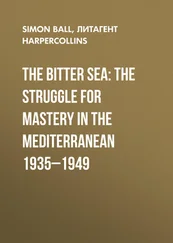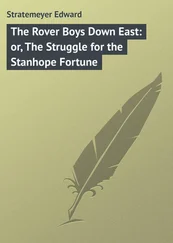Чарльз Дарвин - The Origin of Species by Means of Natural Selection Or, the Preservation of Favoured Races in the Struggle for Life
Здесь есть возможность читать онлайн «Чарльз Дарвин - The Origin of Species by Means of Natural Selection Or, the Preservation of Favoured Races in the Struggle for Life» весь текст электронной книги совершенно бесплатно (целиком полную версию без сокращений). В некоторых случаях можно слушать аудио, скачать через торрент в формате fb2 и присутствует краткое содержание. Год выпуска: 1999, Жанр: Биология, на английском языке. Описание произведения, (предисловие) а так же отзывы посетителей доступны на портале библиотеки ЛибКат.
- Название:The Origin of Species by Means of Natural Selection Or, the Preservation of Favoured Races in the Struggle for Life
- Автор:
- Жанр:
- Год:1999
- ISBN:нет данных
- Рейтинг книги:3 / 5. Голосов: 1
-
Избранное:Добавить в избранное
- Отзывы:
-
Ваша оценка:
- 60
- 1
- 2
- 3
- 4
- 5
The Origin of Species by Means of Natural Selection Or, the Preservation of Favoured Races in the Struggle for Life: краткое содержание, описание и аннотация
Предлагаем к чтению аннотацию, описание, краткое содержание или предисловие (зависит от того, что написал сам автор книги «The Origin of Species by Means of Natural Selection Or, the Preservation of Favoured Races in the Struggle for Life»). Если вы не нашли необходимую информацию о книге — напишите в комментариях, мы постараемся отыскать её.
The Origin of Species by Means of Natural Selection Or, the Preservation of Favoured Races in the Struggle for Life — читать онлайн бесплатно полную книгу (весь текст) целиком
Ниже представлен текст книги, разбитый по страницам. Система сохранения места последней прочитанной страницы, позволяет с удобством читать онлайн бесплатно книгу «The Origin of Species by Means of Natural Selection Or, the Preservation of Favoured Races in the Struggle for Life», без необходимости каждый раз заново искать на чём Вы остановились. Поставьте закладку, и сможете в любой момент перейти на страницу, на которой закончили чтение.
Интервал:
Закладка:
But in all the foregoing cases the insects in their original state no doubt presented some rude and accidental resemblance to an object commonly found in the stations frequented by them. Nor is this at all improbable, considering the almost infinite number of surrounding objects and the diversity in form and colour of the hosts of insects which exist. As some rude resemblance is necessary for the first start, we can understand how it is that the larger and higher animals do not (with the exception, as far as I know, of one fish) resemble for the sake of protection special objects, but only the surface which commonly surrounds them, and this chiefly in colour. Assuming that an insect originally happened to resemble in some degree a dead twig or a decayed leaf, and that it varied slightly in many ways, then all the variations which rendered the insect at all more like any such object, and thus favoured its escape, would be preserved, while other variations would be neglected and ultimately lost; or, if they rendered the insect at all less like the imitated object, they would be eliminated. There would indeed be force in Mr. Mivart's objection, if we were to attempt to account for the above resemblances, independently of natural selection, through mere fluctuating variability; but as the case stands there is none.
Nor can I see any force in Mr. Mivart's difficulty with respect to "the last touches of perfection in the mimicry;" as in the case given by Mr. Wallace, of a walking-stick insect (Ceroxylus laceratus), which resembles "a stick grown over by a creeping moss or jungermannia." So close was this resemblance, that a native Dyak maintained that the foliaceous excrescences were really moss. Insects are preyed on by birds and other enemies whose sight is probably sharper than ours, and every grade in resemblance which aided an insect to escape notice or detection, would tend towards its preservation; and the more perfect the resemblance so much the better for the insect. Considering the nature of the differences between the species in the group which includes the above Ceroxylus, there is nothing improbable in this insect having varied in the irregularities on its surface, and in these having become more or less green-coloured; for in every group the characters which differ in the several species are the most apt to vary, while the generic characters, or those common to all the species, are the most constant.
The Greenland whale is one of the most wonderful animals in the world, and the baleen, or whalebone, one of its greatest peculiarities. The baleen consists of a row, on each side of the upper jaw, of about 300 plates or laminae, which stand close together transversely to the longer axis of the mouth. Within the main row there are some subsidiary rows. The extremities and inner margins of all the plates are frayed into stiff bristles, which clothe the whole gigantic palate, and serve to strain or sift the water, and thus to secure the minute prey on which these great animals subsist. The middle and longest lamina in the Greenland whale is ten, twelve, or even fifteen feet in length; but in the different species of Cetaceans there are gradations in length; the middle lamina being in one species, according to Scoresby, four feet, in another three, in another eighteen inches, and in the Balaenoptera rostrata only about nine inches in length. The quality of the whalebone also differs in the different species.
With respect to the baleen, Mr. Mivart remarks that if it "had once attained such a size and development as to be at all useful, then its preservation and augmentation within serviceable limits would be promoted by natural selection alone. But how to obtain the beginning of such useful development?" In answer, it may be asked, why should not the early progenitors of the whales with baleen have possessed a mouth constructed something like the lamellated beak of a duck? Ducks, like whales, subsist by sifting the mud and water; and the family has sometimes been called Criblatores, or sifters. I hope that I may not be misconstrued into saying that the progenitors of whales did actually possess mouths lamellated like the beak of a duck. I wish only to show that this is not incredible, and that the immense plates of baleen in the Greenland whale might have been developed from such lamellae by finely graduated steps, each of service to its possessor.
The beak of a shoveller-duck (Spatula clypeata) is a more beautiful and complex structure than the mouth of a whale. The upper mandible is furnished on each side (in the specimen examined by me) with a row or comb formed of 188 thin, elastic lamellae, obliquely bevelled so as to be pointed, and placed transversely to the longer axis of the mouth. They arise from the palate, and are attached by flexible membrane to the sides of the mandible. Those standing towards the middle are the longest, being about one-third of an inch in length, and they project fourteen one-hundredths of an inch beneath the edge. At their bases there is a short subsidiary row of obliquely transverse lamellae. In these several respects they resemble the plates of baleen in the mouth of a whale. But towards the extremity of the beak they differ much, as they project inward, instead of straight downward. The entire head of the shoveller, though incomparably less bulky, is about one-eighteenth of the length of the head of a moderately large Balaenoptera rostrata, in which species the baleen is only nine inches long; so that if we were to make the head of the shoveller as long as that of the Balaenoptera, the lamellae would be six inches in length, that is, two-thirds of the length of the baleen in this species of whale. The lower mandible of the shoveller-duck is furnished with lamellae of equal length with these above, but finer; and in being thus furnished it differs conspicuously from the lower jaw of a whale, which is destitute of baleen. On the other hand, the extremities of these lower lamellae are frayed into fine bristly points, so that they thus curiously resemble the plates of baleen. In the genus Prion, a member of the distinct family of the Petrels, the upper mandible alone is furnished with lamellae, which are well developed and project beneath the margin; so that the beak of this bird resembles in this respect the mouth of a whale.
From the highly developed structure of the shoveller's beak we may proceed (as I have learned from information and specimens sent to me by Mr. Salvin), without any great break, as far as fitness for sifting is concerned, through the beak of the Merganetta armata, and in some respects through that of the Aix sponsa, to the beak of the common duck. In this latter species the lamellae are much coarser than in the shoveller, and are firmly attached to the sides of the mandible; they are only about fifty in number on each side, and do not project at all beneath the margin. They are square-topped, and are edged with translucent, hardish tissue, as if for crushing food. The edges of the lower mandible are crossed by numerous fine ridges, which project very little. Although the beak is thus very inferior as a sifter to that of a shoveller, yet this bird, as every one knows, constantly uses it for this purpose. There are other species, as I hear from Mr. Salvin, in which the lamellae are considerably less developed than in the common duck; but I do not know whether they use their beaks for sifting the water.
Turning to another group of the same family. In the Egyptian goose (Chenalopex) the beak closely resembles that of the common duck; but the lamellae are not so numerous, nor so distinct from each other, nor do they project so much inward; yet this goose, as I am informed by Mr. E. Bartlett, "uses its bill like a duck by throwing the water out at the corners." Its chief food, however, is grass, which it crops like the common goose. In this latter bird the lamellae of the upper mandible are much coarser than in the common duck, almost confluent, about twenty-seven in number on each side, and terminating upward in teeth-like knobs. The palate is also covered with hard rounded knobs. The edges of the lower mandible are serrated with teeth much more prominent, coarser and sharper than in the duck. The common goose does not sift the water, but uses its beak exclusively for tearing or cutting herbage, for which purpose it is so well fitted that it can crop grass closer than almost any other animal. There are other species of geese, as I hear from Mr. Bartlett, in which the lamellae are less developed than in the common goose.
Читать дальшеИнтервал:
Закладка:
Похожие книги на «The Origin of Species by Means of Natural Selection Or, the Preservation of Favoured Races in the Struggle for Life»
Представляем Вашему вниманию похожие книги на «The Origin of Species by Means of Natural Selection Or, the Preservation of Favoured Races in the Struggle for Life» списком для выбора. Мы отобрали схожую по названию и смыслу литературу в надежде предоставить читателям больше вариантов отыскать новые, интересные, ещё непрочитанные произведения.
Обсуждение, отзывы о книге «The Origin of Species by Means of Natural Selection Or, the Preservation of Favoured Races in the Struggle for Life» и просто собственные мнения читателей. Оставьте ваши комментарии, напишите, что Вы думаете о произведении, его смысле или главных героях. Укажите что конкретно понравилось, а что нет, и почему Вы так считаете.












